|
Rob Buchkowski, PhD Candidate I set-up an experiment this fall to examine the relationship between herbivores and detritivores. While they are generally separated in space, herbivores and detritivores can interact with each other indirectly through their shared interaction with plants. Herbivores clearly consume plants and therefore cause and respond to changes in plant abundance and diversity. Detritivores consume decaying material that originates largely from plants and influence the rate at which important nutrients are recycling and become plant available. Consequently, herbivores and detritivores may have strong effects on each other and the rest of the ecosystem even if they don’t interact directly. My experiment is designed to test these effects. The herbivore in my experiment will be the familiar red-legged grasshopper (Melanoplus femurrubrum) and the detritivore will be the red earthworm (Lumbricus rubellus). The basic plan is to combine these two species in a factorial design (nothing, worm, hopper, worm + hopper) and measure their impact on the soil, the plants, and nitrogen in the coming years. I am particularly interested in the impact of these animals on nitrogen cycling, because changes in nitrogen can cause major changes in the ecosystem as a whole. To manipulate earthworms and grasshoppers together I needed field cages that spanned above and below ground. While I had used buckets in my Masters to study herbivores and detritivores, I wanted to keep the soil belowground this time in order to maintain important microclimatic conditions, such as temperature and moisture. I decided to dig out holes for my cages in and replace the soil after installing a barrier to reduce earthworm movement. The barrier could then transition seamlessly into an aboveground cage to keep out the grasshoppers. To get enough replication, I needed at least 40 cages, so I decided to make 60 to be safe. The cages also need to be big enough to accommodate populations and grasshopper and worms and deep enough to keep the plant roots happy. While big cages were clearly desirable, I couldn’t make them too big because any increase in depth or circumference resulted in a third power increase in volume of soil I needed to move. I set the dimensions at 45cm in diameter and 40cm deep. With these decisions in place, my task became clear—dig out between three and four cement trucks worth of rock laden New England soil, mix the soil to try and reduce variability, and return it to the holes after removing large rocks and installing the cages. I built the cages out of a mixture of plastic garden fence, fiberglass window screen, and landscaping cloth. I was on my way to buy the steel garden fence we usually use for cage construction when I realized that electroshocking earthworms out of steel cages wasn’t a very good idea. I rented a Ditch Witch mechanical auger to handle the digging, which will probably be the best $300 I will spend during my PhD. Equipped with an 18” mechanical auger (~45cm), the Ditch Witch was able to drill about 10 holes in 20 minutes! This gave us lots of time to shovel the soil into buckets and cart it over to a pile next to the experimental plot. We also spent an unexpected amount of time digging out toaster-sized boulders to even out the bottom of the holes. Three to four times I had to forfeit the perfect lattice design of my experiment to what appeared to be oven-sized rocks. After moving the soil into a pile, we mixed it with the bucket attachment that came with our Ditch Witch. This was one of the most fun parts of the process as we all stood around taking turns flipping the soil and watching the sunset. The next week, I returned to the field site to install my cages and shovel the soil back into them. With the help of a new set of volunteers including Os, the work went quickly and soon all cages were filled. In the spring, I will return to Yale Myers to plant seedlings into the cages and begin my first campaign to remove the earthworms from the soil.
164 Comments
lixc
2/23/2016 02:12:14 am
Great work! Thanks for sharing!
Reply
4/6/2016 08:34:39 am
Yay! So happy to see my favourite auger here - the mighty Ditch Witch! It's a mean machine and a handy tool in the same time, I often use it to drill holes and process soil in my daily landscape design work. And yes, it is a very interesting experiment, glad you shared.
Reply
7/15/2024 06:03:40 am
Nice post. I find out something more difficult on distinct blogs everyday. It will always be stimulating to learn to read content using their company writers and exercise a specific thing from their store. I’d would prefer to apply certain together with the content in this little weblog whether you do not mind. Natually I’ll offer you a link on your web blog. Thank you for sharing
Reply
10/5/2016 11:33:36 pm
This article is really fantastic and thanks for sharing the valuable post.
Reply
7/18/2024 04:36:06 am
Good site! I really love how it is simple on my eyes and the data are well written. I’m wondering how I could be notified when a new post has been made. I’ve subscribed to your RSS feed which must do the trick! Have a nice day!
Reply
12/8/2016 08:27:17 pm
It was nice to know about this. Great pictures! Btw, I am the blogger here at www.retailsolutionsadvisors.com and let us know what you think of our site. You can see our blog in the menu. We take pride in our finance commercial real estate blog and related topics, we use on our blog. We will save your site.
Reply
2/17/2019 01:28:19 am
herbivores and detritivores are useful species on the earn and both play vital role in ecosystem and I really give appreciate for share the valuable post with us.I prefer to use fence garden for safety my garden.
Reply
3/19/2019 02:09:48 am
This is a really amazing piece of writing. I’m impressed, I must say. There are things that I come to know for the first time and I wanna to give thank you for sharing the information.
Reply
3/19/2019 02:47:20 am
Thanks for sharing this wonderful post. I appreciate your time and effort to bring such useful information in front of everyone. I appreciate you for writing this article and looking forward to more articles from you in the future :) :)
Reply
3/19/2019 06:44:12 am
It is a great written stuff. Not many people write like this. This article is helpful and I think many readers should read this wonderful information.
Reply
4/9/2019 05:55:49 am
This article is good. you have presented it with intelligent and thoughtful content.
Reply
5/28/2019 06:32:54 am
This is a really amazing piece of writing. There are things that I come to know for the first time and I wanna to give thank you for sharing the information.
Reply
6/17/2019 02:21:33 am
Excellent article. Thanks for sharing this detailed information with experiment.
Reply
6/30/2019 10:42:01 am
It's an awesome post! It is genuinely good for the readers to go through something which is appealing and the instincts in mind get a boost.
Reply
7/31/2019 03:03:36 am
I have no words to express my thoughts about the post. It is super amazing and I wanna to thanks you for sharing such a wonderful thing with us!!
Reply
10/21/2019 10:40:11 am
There are things that I come to know for the first time and I wanna to give thank you for sharing the information.
Reply
2/12/2020 05:22:38 am
What a greThank you.at article you've written! This is useful and well-thought out information with thought-provoking viewpoints and content. I'm impressed with how well you have presented this information in such and interesting and original way.
Reply
3/5/2020 04:30:14 pm
Thank you for sharing this information, it is very helpful! Best regards
Reply
9/15/2020 08:50:54 am
I want to thank you for your time for this wonderful Article!! I definitely enjoy every little bit of it and I have you bookmarked to check out new stuff you blog post.
Reply
11/22/2020 10:16:10 pm
A very helpful and educational post. Thank you for sharing this.
Reply
3/30/2021 05:24:23 am
Thanks for getting me back into the reading again. I really enjoyed the stuff you shared in the form of blogs. Keep writing.
Reply
5/16/2021 08:43:58 am
This is such a useful information. Thanks for posting!
Reply
6/16/2021 01:18:52 am
I appreciate your skills and style in elaborating on the topic. It bound the reader for long. I have liked everything that I have read in the article so far. Nice content.
Reply
9/12/2021 01:55:50 pm
Nice article! Thanks for sharing this useful information.
Reply
9/12/2021 01:57:08 pm
I want to give you a big thumbs up for this nice work. Thanks for this fantastic post. Keep updating your more ideas with us.
Reply
9/14/2021 03:20:22 am
I appreciate your skills and style in elaborating on the topic. It bound the reader for long. I have liked everything that I have read in the article so far. Nice content.
Reply
11/30/2021 01:30:44 am
Thanks for sharing very useful information with us.
Reply
12/3/2021 06:12:30 am
Wonderful content as always. I love how you talk about the topics in detail. Keep the articles coming
Reply
4/28/2022 02:28:43 pm
Visit our website at https://www.study-aids.co.uk and gain access to thousands of university dissertations, journals, articles and reference books. We now offer delivery worldwide. We specialize in MBA dissertation writing and reference material. Join our growing community today.
Reply
5/3/2022 12:48:05 am
Really informative blog . Thanks for sharing and keep sharing like this.
Reply
5/12/2022 05:32:16 am
Thank you for providing such information and keep writing like this.
Reply
7/29/2022 02:11:28 am
Generally, I don’t read articles on blogs, but I wish to say that this write-up very forced me to check out and do so! Your writing style has been amazed me.
Reply
11/16/2022 05:28:15 am
Useful Information. Thank you for sharing this post.
Reply
11/18/2022 05:05:51 am
I've read your article which is very useful and informative for everyone. Thank you for sharing this post.
Reply
1/9/2023 07:28:48 am
Thanks for sharing such a useful method of combing herbivores and detritivores.
Reply
2/21/2023 01:37:52 pm
I wanted to thank you for this excellent read!! I definitely loved every little bit of it. I have you bookmarked your site to check out the new stuff you post.
Reply
3/22/2023 04:51:16 am
Thanks for getting me back into reading again. I really enjoyed the stuff you shared in the form of blogs. Keep writing.
Reply
7/27/2023 05:00:25 am
I also appreciate the way you incorporate different perspectives into your writing. You have a talent for presenting multiple viewpoints in a balanced and fair manner, which is something that is often lacking in today’s media landscape. Your ability to see things from different angles adds depth and richness to your writing, and it makes your posts all the more engaging
Reply
Overall, I am thoroughly impressed by your work, and I am grateful for the opportunity to read your thoughts on this topic. You are a talented writer, and I have no doubt that you will continue to make a positive impact on the world through your writing. Keep up the great work, and know that you have a dedicated reader in me
Reply
Apakah kamu suka dengan permainan slot online? Jika demikian maka kamu sudah menuju situs slot gacor yang tepat! Di RAJA258, kami merupakan salah satu pengembang situs slot77 yang memiliki afiliasi dengan semua provider tergacor, dan juga kami merupakan salah satu pemegang lisensi dari pengembang game terbaik di Indonesia. Hanya dengan klik tab pada menu slot kami, Kamu akan menemukan lebih dari 30 provider games slot gacor favorit seperti pragmatic play, pg soft, slot77, slot88. <a href="https://raja258ku.com/" target="_blank">https://raja258ku.com/</a>
Reply
2/16/2024 05:36:11 am
is an addictive driving game that challenges players to drift through turns without falling down.
Reply
I thoroughly enjoyed reading your insightful blog post! Your expertise shines through in your well-researched content, providing valuable insights that truly resonate with your audience. I look forward to reading more from you in the future!
Reply
https://77jlslot.com/category/jili-slot-game
Reply
6/4/2024 02:10:06 am
I’m curious to <a href="https://www.mascargoexpress.com/ekspedisi-jakarta-balikpapan/">cargo jakarta balikpapan</a> find out what blog system
Reply
6/4/2024 04:06:07 am
is one of the <a href="https://www.mascargoexpress.com/ekspedisi-jakarta-balikpapan/">tarif cargo jakarta balikpapan</a> private islands in the Thousand Islands with luxurious accommodations
Reply
6/4/2024 05:41:38 am
I choose to focus on <a href="https://www.mascargoexpress.com/ekspedisi-jakarta-batam/">ekspedisi jakarta batam</a> tobacco because it is one of the most heavily used and normalized drugs in society.
Reply
6/4/2024 09:46:20 pm
The contemporary <a href="https://www.mascargoexpress.com/ekspedisi-jakarta-batam/">tarif cargo jakarta batam</a> wing of the Nelson-Atkins Museum
Reply
6/4/2024 10:52:58 pm
Our nation is in <a href="https://www.mascargoexpress.com/ekspedisi-jakarta-jayapura/">ekspedisi jakarta ke jayapura</a> the midst of an opioid epidemic
Reply
6/4/2024 11:44:54 pm
that is spiraling <a href="https://www.mascargoexpress.com/ekspedisi-jakarta-jayapura/">harga cargo jakarta jayapura</a> downwards and has been since Purdue Pharma introduced
Reply
6/5/2024 12:40:07 am
Here is a <a href="https://www.mascargoexpress.com/ekspedisi-jakarta-ambon/">jasa cargo jakarta ke ambon</a> photo of a women holding her
Reply
6/5/2024 02:27:33 am
introduced OxyContin <a href="https://www.mascargoexpress.com/ekspedisi-jakarta-ambon/">harga cargo jakarta ambon</a> extended-release tablets in 1996.
Reply
6/5/2024 12:25:15 pm
I have express a few of the articles on your website now, and I really like your style of blogging. I added it to my favorite’s blog site list and will be checking back soon…
Reply
6/5/2024 09:55:58 pm
My teacher seemed busy <a href="https://www.mascargoexpress.com/ekspedisi-jakarta-bali/">Ekspedisi Jakarta bali</a> organizing paperwork on her desk,
Reply
6/5/2024 10:50:28 pm
It seems as if federalism has <a href="https://www.mascargoexpress.com/ekspedisi-jakarta-bali/">Cargo Jakarta bali</a> reared its ugly head during the recent SARS-Cov-2 pandemic.
Reply
6/5/2024 11:33:43 pm
Federalism’s core ideas <a href="https://www.mascargoexpress.com/ekspedisi-jakarta-bali/">Jasa pengiriman barang Jakarta bali</a> allow our country to thrive as a melting pot of ideas
Reply
6/6/2024 12:24:08 am
My teacher seemed <a href="https://www.mascargoexpress.com/ekspedisi-jakarta-bali/">Harga Ekspedisi Jakarta bali</a> busy organizing paperwork on her desk
Reply
6/6/2024 02:10:57 am
where each state’s <a href="https://www.mascargoexpress.com/ekspedisi-jakarta-bali/">Tarif cargo Jakarta bali</a> self-governance allows them to tackle
Reply
6/6/2024 10:03:14 pm
I knew our <a href="https://www.mascargoexpress.com/cargo-makassar/">ekspedisi jakarta Makassar</a> Japanese penpal’s letters would be coming in today
Reply
6/6/2024 11:07:48 pm
I was much more <a href="https://www.mascargoexpress.com/cargo-makassar/">cargo jakarta Makassar</a> impatient as an adolescent.
Reply
6/6/2024 11:44:09 pm
My teacher explained these <a href="https://www.mascargoexpress.com/cargo-makassar/">jasa pengiriman barang jakarta Makassar</a> students were from a rural town in Japan
Reply
6/7/2024 10:16:10 am
They're produced by the very best degree developers who will be distinguished for your polo dress creating. You'll find polo Ron Lauren inside exclusive array which include particular classes for men, women.
Reply
6/10/2024 03:14:29 am
With networking, everyone is <a href="https://www.bubatrental.com/">Rental Mobil di Bandung</a> meeting a ton of people all the time
Reply
6/10/2024 04:11:30 am
and it can be <a href="https://www.bubatrental.com/">Sewa Mobil Murah di Bandung</a> difficult to be heard amongst all the “noise.”
Reply
6/10/2024 05:00:04 am
One of the greatest ways <a href="https://www.bubatrental.com/">Rental Mobil Murah di Bandung</a> to stand out is to mention something in your conversation
Reply
6/10/2024 05:36:24 am
Many times you <a href="https://www.bubatrental.com/">Rental Mobil Murah Bandung</a> know in advance who
Reply
6/10/2024 10:08:01 pm
invested the time to <a href="https://www.bubatrental.com/">Sewa Mobil di Bandung</a> look into their background and/or company.
Reply
6/10/2024 10:56:16 pm
I spent the summer <a href="https://www.bubatrental.com/">Sewa Mobil Murah Bandung</a> traveling all over New England collecting grasshoppers
Reply
6/10/2024 11:43:33 pm
Without that <a href="https://www.bubatrental.com/">Sewa Mobil Bandung Dengan Supir</a> information, the best conversation you could
Reply
6/11/2024 12:24:39 am
one that doesn’t <a href="https://www.bubatrental.com/">Rental Mobil dan Supir Bandung</a> feel canned or obligatory
Reply
6/11/2024 02:47:21 am
if you do a little <a href="https://www.bubatrental.com/">Rental Mobil Lepas Kunci Bandung</a> digging beforehand, you can have a real conversation
Reply
6/11/2024 10:08:09 pm
webpages that will <a href="https://www.bubatrental.com/">Sewa Mobil Murah Bandung</a> highlight something that you can use in your meeting.
Reply
6/11/2024 10:52:15 pm
emails the same <a href="https://www.bubatrental.com/">Sewa Mobil Bandung Dengan Supir</a> network connection at roughly the same time
Reply
6/11/2024 11:42:17 pm
Did you find that you both <a href="https://www.bubatrental.com/">Sewa Mobil di Bandung Murah Dengan Supir</a> went to the same school? Mention it!
Reply
6/12/2024 12:49:58 am
you can have <a href="https://www.bubatrental.com/">Sewa Mobil Harian Bandung</a> a real conversation
Reply
6/12/2024 02:48:50 am
Many times you know in <a href="https://www.bubatrental.com/">Sewa Rental Mobil Bandung</a> advance who, or at least which companies
Reply
6/12/2024 09:53:17 pm
in a promotional <a href="https://www.bubatrental.com/">Tempat Rental Mobil di Bandung</a> video directed at physicians that claimed
Reply
6/13/2024 05:22:24 am
Dexterity and flexibility when adjusting drift angles help players become a true "boss".
Reply
6/13/2024 09:48:14 pm
different because <a href="https://www.bubatrental.com/">sewa hiace bandung</a> of the sake of the virus and its spread.
Reply
6/13/2024 10:36:38 pm
Remote learning <a href="https://www.bubatrental.com/">rental hiace bandung</a> enables students to be at low to the exposure of the coronavirus.
Reply
6/13/2024 11:41:29 pm
which may help <a href="https://www.bubatrental.com/">rental mobil bulanan</a> alleviate the risk of exposure to students and staff.
Reply
6/14/2024 02:28:11 am
As schools are <a href="https://www.bubatrental.com/">rental mobil mingguan</a> opening up, many school districts figure out a strategic
Reply
6/14/2024 04:24:30 am
Thanks for your post.
Reply
Berry's
6/20/2024 12:20:06 am
It is awesome<a href="https://umsu.ac.id/">...</a>it helps me a lot<a href="https://umsu.ac.id/berita/kampus-terbaik-di-medan-akreditasi-banpt/">...</a>and <a href="https://faperta.umsu.ac.id/">...</a>thanks<a href="https://umsu.ac.id/hukum-pidana-adalah/">... for the explanation <a href="https://umsu.ac.id"> </a> <a href="https://fahum.umsu.ac.id"> </a> <a href="https://faperta.umsu.ac.id"> </a> <a href="https://fai.umsu.ac.id"> </a> <a href="https://fkip.umsu.ac.id"> </a> <a href="https://fisip.umsu.ac.id"> </a> <a href="https://fikti.umsu.ac.id"> </a> <a href="https://fatek.umsu.ac.id"> </a> <a href="https://feb.umsu.ac.id"> </a> <a href="https://jurnal.umsu.ac.id"> </a> <a href="https://pascasarjana.umsu.ac.id"> </a> <a href="https://oif.umsu.ac.id"> </a> <a href="https://fk.umsu.ac.id"> </a> <a href="https://manufa.ponpes.id"> </a>
Reply
Balz Grollimund
6/24/2024 10:31:01 am
For the insurance industry, recent events provide robust benchmarks for estimating the increasing loss trends. Nevertheless, to further progress the deeper understanding of this peril, it is important to get better insights from primary insurers on distributions of insured exposure and detailed claims data. It is equally important that insurance premiums adequately reflect the risk for the coverage provided especially also in light of increasing loss trends.
Reply
6/24/2024 10:33:21 am
The report complements the findings from Moody’s survey ‘Life Insurers: Climate Risk Modelling and Risk Assessment Process.’ The respondents ranged in insurance businesses including Life, Health, P&C, Reinsurance, and other related financial institutions.
Reply
6/25/2024 02:44:07 am
Maybe you discovered <a href="http://bastianrental.com/">Rental Mobil di Bandung</a> that you share hobbies or common interests
Reply
6/25/2024 03:37:06 am
so that <a href="http://bastianrental.com/">Sewa Mobil Murah di Bandung</a> you can convey genuine interest.
Reply
6/25/2024 04:16:00 am
We’ve done some <a href="http://bastianrental.com/">Rental Mobil Murah di Bandung</a> of the legwork for you and brought
Reply
6/25/2024 05:57:42 am
that ties you to <a href="http://bastianrental.com/">Rental Mobil Murah di Bandung</a> your potential network connection
Reply
matcha
6/27/2024 12:17:20 am
It is awesome<a href="https://umsu.ac.id/">...</a>it helps me a lot<a href="https://umsu.ac.id/berita/kampus-terbaik-di-medan-akreditasi-banpt/">...</a>and <a href="https://faperta.umsu.ac.id/">...</a>thanks<a href="https://umsu.ac.id/hukum-pidana-adalah/">... for the explanation
Reply
7/6/2024 01:51:41 pm
To know the genuine information and correct knowledge on any topic you visit this educational site. You can visit Indian Govt Portal.
Reply
7/11/2024 05:41:09 am
Youre so cool! I dont suppose Ive read anything like that just before. So nice to find somebody by incorporating original applying for grants this subject. realy we appreciate you starting this up. this web site are some things that is required on the internet, a person after some originality. helpful task for bringing interesting things on the internet!
Reply
7/12/2024 03:56:40 am
my11circlecasinogames provide a diverse selection that enhances the entertainment value of its fantasy sports platform.
Reply
https://biubiubet.com/
Reply
المثاليه بولز
7/15/2024 03:30:37 am
شركة مسابح بالدمام هي إحدى الشركات الرائدة في مجال إنشاء وصيانة المسابح في المنطقة الشرقية بالمملكة العربية السعودية. تتميز الشركة بتقديم خدمات متكاملة تشمل تصميم المسابح وتنفيذها بأحدث التقنيات والمواصفات العالمية. كما توفر الشركة خدمات الصيانة الدورية وإصلاح المسابح، مما يضمن استمرارية وأمان استخدام المسابح على مدار السنة. بفضل فريق عمل مدرب ومتخصص، تسعى الشركة إلى تحقيق رضا العملاء من خلال تقديم حلول مبتكرة وجودة عالية في كل خدماتها.
Reply
المثالية بولز
7/15/2024 03:32:23 am
[url=https://www.fanaronline.com/]شركة مسابح بالدمام[/url]
Reply
المثالية بولز
7/15/2024 03:32:51 am
شركة مسابح بالدمام
Reply
المثالية بولز
7/15/2024 03:33:13 am
[شركة مسابح بالدمام](https://www.fanaronline.com)
Reply
Absolutely fantastic article! The insights are not only spot on but also incredibly enlightening. Your expertise shines through and makes a real impact. I can't wait to see more of your outstanding content!
Reply
7/16/2024 10:48:59 pm
From appointments to medical reports, <a href="https://assist.id/">Assist id</a> are here to simplify every step in your hospital.
Reply
It is awesome<a href="https://umsu.ac.id/">...</a>it helps me a lot<a href="https://umsu.ac.id/berita/kampus-terbaik-di-medan-akreditasi-banpt/">...</a>and <a href="https://faperta.umsu.ac.id/">...</a>thanks<a href="https://umsu.ac.id/hukum-pidana-adalah/">... for the explanation <a href="https://umsu.ac.id"> </a> <a href="https://fahum.umsu.ac.id"> </a> <a href="https://faperta.umsu.ac.id"> </a> <a href="https://fai.umsu.ac.id"> </a> <a href="https://fkip.umsu.ac.id"> </a> <a href="https://fisip.umsu.ac.id"> </a> <a href="https://fikti.umsu.ac.id"> </a> <a href="https://fatek.umsu.ac.id"> </a> <a href="https://feb.umsu.ac.id"> </a> <a href="https://jurnal.umsu.ac.id"> </a> <a href="https://pascasarjana.umsu.ac.id"> </a>
Reply
7/22/2024 04:05:09 am
I would like to thank you for the efforts you have made in writing this article. I am hoping the same best work from you in the future as well. In fact your creative writing abilities has inspired me to start my own Blog Engine blog now. Really the blogging is spreading its wings rapidly. Your write up is a fine example of it.
Reply
7/23/2024 11:36:21 am
In the world of music, staying in tune is crucial for any guitarist. Modern guitar tuners have revolutionized the way musicians tune their instruments, offering precision, convenience, and a variety of features that cater to both beginners and professionals.
Reply
7/25/2024 03:34:52 am
This is a truly good site post. Not too many people would actually, the way you just did. I am really impressed that there is so much information about this subject that has been uncovered and you’ve done your best, with so much class. If you want to know more about car rental reviews, than by all means come in and check our stuff. <a href="https://www.infosewamobilsurabaya.com/2024/06/sewa-mobil-surabaya-murah-dengan-sopir.html">Sewa Mobil Surabaya</a>
Reply
Leave a Reply. |
Archives
November 2019
Categories
All
|
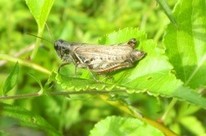
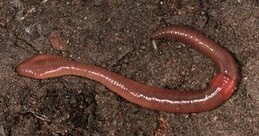
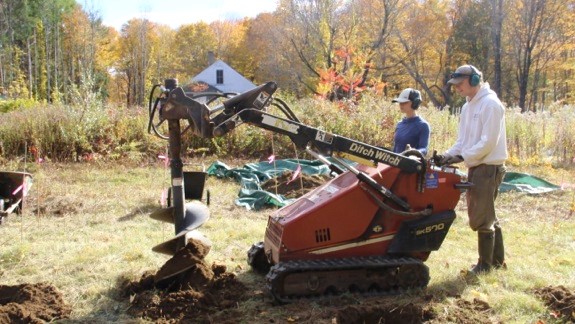
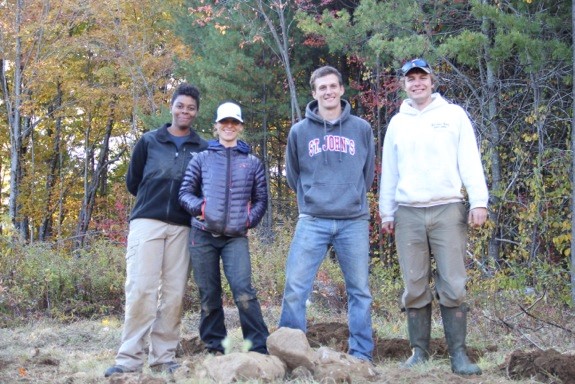
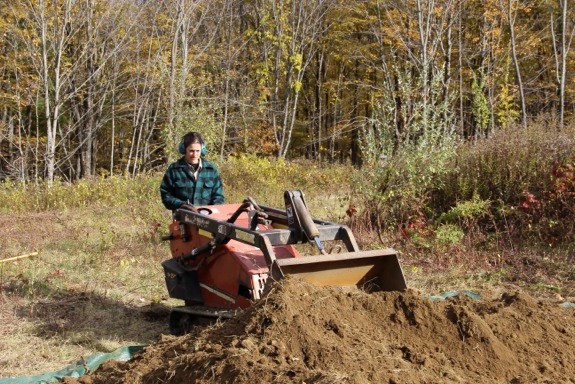
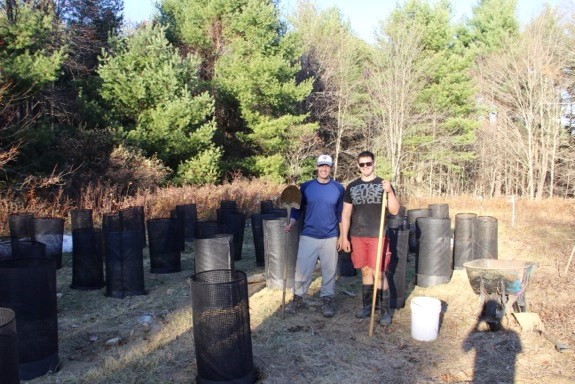
 RSS Feed
RSS Feed
